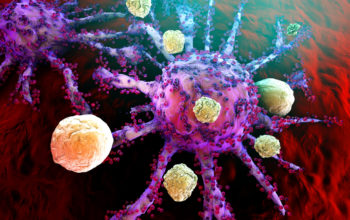
Date: 17th February 2022
Cardiovascular diseases (CVDs) are the leading cause of death globally. In many cases heart transplantation is the best solution to end-stage organ failure however, one of the largest current healthcare challenges is a severe shortage of organs. There is a concerted effort amongst scientists to find innovative solutions to the crisis, and the development of an artificial heart is one of them. However, the high levels of complexity in the function and design of the heart makes this an extremely difficult task. Biohybrid systems facilitate a better understanding of the design principles and coordination mechanisms of biological systems and could be an important stepping stone towards building an artificial heart. Now, researchers have built the first fully autonomous biohybrid fish from human stem-cell derived cardiac muscle cells propelled by recreating the muscle contractions of a pumping heart.
The most basic function of the circulatory system is fluid transport, and in nature there is a large diversity in pumping mechanisms that drives this. Whilst at a glance this seems very distinct from the oscillatory fluid mechanisms in which fluid is transported along the body to generate propulsive thrust in aquatic species, they actually bear many resemblances. Both use a closed-looped control system, where internal feedback imparts momentum to drive fluid motion.
So could the two functional regulatory features of the heart, mechanoelectrical signalling and automaticity, be transferred to a synthetic analog of self-paced muscle actuation to create a swimming fish? That was the question asked by researchers at Harvard University and Emory University led by Kit Parker.
The team developed an antagonistic muscular bilayer constructed using modifying hydrogel-based thin films, which they seeded both sides with CMs. Then the muscular bilayer construct was integrated into the biohybrid fish by means of tissue engineering techniques. The body of the fish was a rigid paper layer forming the anterior of the body and a caudal fin fabricated by laser ablation, and compliant gelatin layer for the posterior part of the body.
It is thought that mechanoelectrical signalling regulates intracardiac feedback, which allows CMs to adaptively respond to dynamic mechanical pressures via stretch-activated mechanosensitive proteins. The team therefore electrically connected the bilayer of muscles within each side and mechanically coupled across each side of the fish. This produced a swimming motion where the shortening of contracting muscles on each side directly translated to axial stretching of the opposite muscle, leading to stretching-induced antagonistic muscle excitation and contraction.
To replicate the electrically insulated structure of a sinoatrial node which functions as an autonomous pacing node initiating spontaneous electrical activity, they functionally isolated a small number of CMs in the G-node, connecting them with a single exit pathway to the muscles in the biofish.
Together, this produced the generation of continuous, spontaneous, and coordinated, back-and-forth fin movements, propelling the fish through the water.
The final little biohybrid fish contained 73,000 live CMs, with a body length of 14mm, and a total mass of 25mg. The team found the biofish improved with age as the CMs matured, muscle contraction amplitude increased, as did maximum swimming speed and muscle coordination. Within the first month, the biohybrid fish reached swimming speeds and efficacy of that of a zebrafish in the wild. Impressively the biofish maintained spontaneous activity for 108 days.
Conclusions and future applications
The team here have integrated two functional design features of the heart—mechanoelectrical signaling and automaticity—into a biohybrid platform and recreated an autonomously actuating cardiac muscular system in the form of a biohybrid fish.
Whilst, it may seem a large jump from biohybrid fish to artificial heart this new research will provided a model to investigate mechano-electrical signalling as a therapeutic target of heart rhythm management and for understanding pathophysiology in sinoatrial node dysfunctions and cardiac arrhythmia. The lessons learnt here, such as the crucial role of feedback mechanisms in muscular pumps, and insights derived from interrogating more complex biohybrid devices will hopefully lead to the team’s ultimate goal - to build an artificial heart to replace a malformed heart in a child.
The device here is likely to be a valuable tool for researchers, and will accelerate work to look for alternatives to organ transplantation. Two first-of-its-kind transplantations have very recently been performed, in the first a genetically modified pig heart was successfully transplanted into a man with end-stage heart disease, which fully functioned and last we heard had reached the two week milestone. In the other, similarly genetically modified pig’s kidneys were transplanted into a brain dead man. Whilst, this is early days for the cross species type of transplantation, it does offer potential hope to thousands of patients who would not receive a suitable organs. However, the development of an artificial heart would likely be highly desirable, reducing ethical worries, fears of cross-species transplantation, reducing the chances of immune rejection, and in essence would be far more accessible to the masses. Work in models like the biohybrid fish will be instrumental in the drive towards this goal.
For more information please see the press release at Harvard University
Lee, K.Y., Park, S.-J., Matthews, D.G., Kim, S.L., Marquez, C.A., Zimmerman, J.F., Ardoña, H.A.M., Kleber, A.G., Lauder, G.V., and Parker, K.K. (2022). An autonomously swimming biohybrid fish designed with human cardiac biophysics. Science 375, 639-647.
https://doi.org/10.1126/science.abh0474


